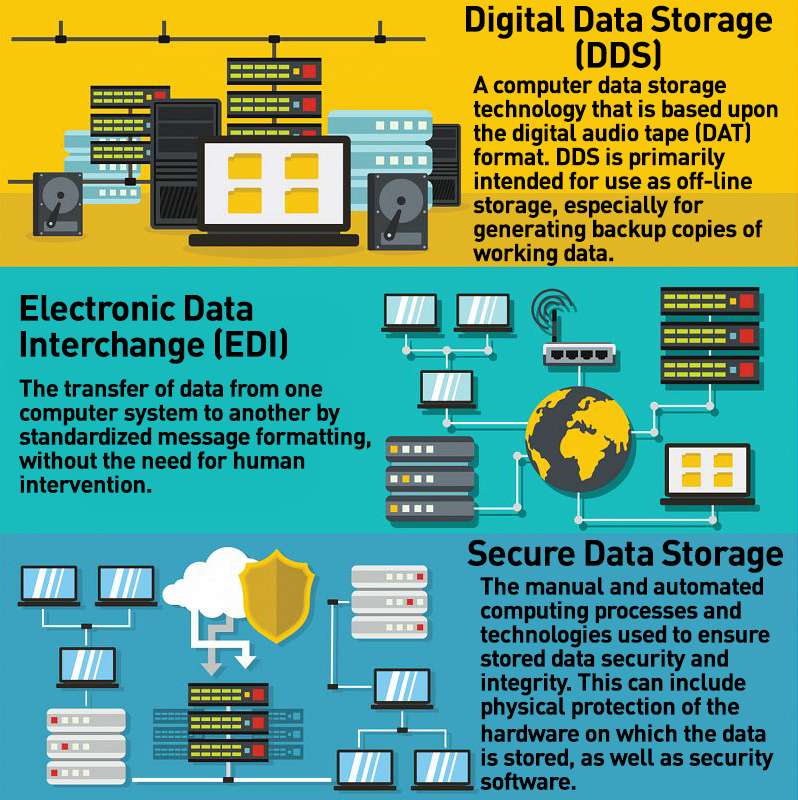Exploring the Importance of Information Destruction in the Context of Computer System Safety And Security Solutions and Protecting Confidential Information
In a period where data violations are progressively typical, the significance of reliable data damage can not be overemphasized. What methods can companies implement to boost their information devastation procedures?
Comprehending Information Destruction
Information destruction is a vital element of computer protection that involves the long-term elimination of information from storage devices to avoid unauthorized gain access to and potential information violations. In a significantly digital landscape, organizations face heightened threats associated with sensitive information being improperly accessed or made use of. Reliable data destruction safeguards against these risks, making sure that personal dataâEUR" such as customer information, copyright, and economic recordsâEUR" can not be recouped after disposal.
Comprehending the value of data damage prolongs past plain compliance with lawful and regulative frameworks; it is essential for preserving business stability and trust fund. When data is poorly managed or improperly ruined, the consequences can be serious, including financial loss, reputational damages, and legal liabilities.

Techniques of Data Elimination

One prevalent approach is data wiping, which involves overwriting existing data with random patterns multiple times. This technique renders the initial data irretrievable, making it a preferred selection for companies looking for to safeguard personal details.
One more approach is degaussing, which makes use of a powerful magnetic field to interrupt the magnetic domains on storage gadgets, properly getting rid of the information. This technique is specifically effective for magnetic media but is not relevant to solid-state drives.
Physical devastation is one more robust approach, entailing the shredding or squashing of storage devices. This technique assurances that information recuperation is virtually difficult, making it ideal for very sensitive info.
Lastly, encryption can function as a corresponding technique to data obliteration. By encrypting data prior to removal, organizations can add an added layer of security, making sure that also if remnants are recuperated, they continue to be inaccessible without the decryption secret. Each approach ought to be selected based upon the level of information sensitivity and the certain protection demands of the organization.
Legal Conformity and Information Safety And Security
Organizations have to navigate an intricate landscape of lawful demands associated with data security, especially after executing techniques of information obliteration. Various guidelines, such as the General Information Defense Policy (GDPR) and the Medical Insurance Transportability and Responsibility Act (HIPAA), impose strict standards on just how organizations should handle and get rid of of delicate data. Failing to follow these guidelines can result in significant lawful effects, consisting of significant penalties and reputational damage.
Data destruction procedures should be meticulously documented to show conformity with suitable legislations and requirements. This paperwork not only offers as proof of adherence to legal commitments but also shows a commitment to safeguarding delicate info. Organizations needs to additionally establish clear plans pertaining to information retention and devastation timelines, guaranteeing that information is not held longer than necessary.

Furthermore, regular audits and evaluations of information damage techniques are vital to keep conformity and adapt to progressing legal frameworks (data destruction). By proactively resolving lawful needs, organizations can minimize threats connected with information breaches and show their commitment to data security. Ultimately, prioritizing legal compliance in information devastation processes is not simply a regulative commitment, yet an essential element of a durable data security technique
Effect On Company Reputation
The track record of an organization can be considerably influenced by its method to information destruction and administration. In today's digital landscape, where information breaches can happen anytime, the failure to appropriately deal with sensitive info can cause severe repercussions. Organizations that improperly handle information destruction danger revealing confidential consumer details, which not just breaks personal privacy regulations but likewise deteriorates depend on amongst stakeholders and customers.
A tarnished reputation can cause lowered client commitment, as clients become hesitant to involve with an organization that has shown negligence in shielding their data. Additionally, negative publicity surrounding an information violation can have a long lasting result, as potential consumers may be prevented by the viewed absence of safety. This can bring about a straight decrease in revenue and market share.
Moreover, services that focus on information destruction as part of their safety and security strategy can improve their reputation by showcasing their dedication to securing sensitive details. By embracing rigid data management methods, companies can not just mitigate risks however likewise position themselves as credible entities in their respective industries, thereby strengthening their general brand name picture.

Finest Practices for Secure Disposal
Implementing finest techniques for safe and secure disposal of data is important for mitigating threats connected with information breaches and making certain compliance with personal privacy laws. Organizations ought to take on a thorough information disposal plan that details procedures for both digital and physical data devastation.
For physical information storage devices, such as hard disk drives, shredding or degaussing is recommended to avoid data healing. Furthermore, companies need to i loved this maintain a chain of wardship documents during the disposal process, making certain accountability and traceability of disposed things.
For electronic information, using software program that follows market criteria for information wiping is critical. This software application ought to overwrite existing data multiple times, making recovery virtually impossible. It is additionally essential to validate the efficiency of the data devastation process with audits or third-party assessments.
Training staff members on protected disposal practices adds another layer of safety, as human mistake can often lead to data direct exposure. Routinely reviewing and updating disposal plans guarantees positioning with evolving guidelines and technological innovations. By executing these best methods, organizations can significantly reduce the risk of unapproved information accessibility and enhance their useful reference total data security strategy.
Final Thought
Finally, data devastation is an essential facet of computer system safety services that makes certain the defense of secret information from unapproved accessibility. Implementing reliable techniques of information elimination, sticking to lawful compliance, and acknowledging the impact on service credibility are crucial components of an extensive data safety and security method. By adopting best practices for protected disposal, companies can cultivate check out this site trust with customers and secure sensitive data, ultimately contributing to a much more protected digital landscape.
In an era where data breaches are increasingly typical, the significance of reliable data devastation can not be overemphasized.Information destruction is a crucial part of computer protection that includes the long-term removal of data from storage space devices to prevent unapproved access and prospective information violations. Organizations ought to also establish clear plans relating to data retention and devastation timelines, ensuring that information is not held longer than needed.
By proactively dealing with lawful needs, companies can mitigate risks linked with data violations and show their commitment to data safety and security (data destruction). Inevitably, prioritizing lawful conformity in data damage processes is not just a governing commitment, however a fundamental facet of a durable data security method